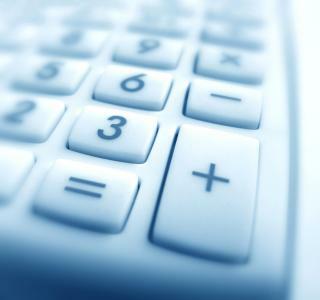The ceteris paribus is an expression of Latin origin that means “everything else remains constant ”or “everything else unchanged”. It is a methodological resource used in economics and finance whose purpose is to isolate the influence that some particular variable exerts on a phenomenon that is conditioned by several factors.
This has to do with trying to study a certain variable and its influence in a given situation, while the other variables present remain the same, that is, constant. In this way, the analysis is simplified and limits are set, which would not be possible if all of them had to be studied at the same time.
Advertisements

A complex phenomenon can be better understood and its description made easier by applying this method repeatedly, but analyzing one variable at a time. The application of this method has become a fundamental instrument for economic analysis today.
Advertisements
In this article you will find:
Ceteris paribus method
The concept of "ceteris paribus" or "everything else remains the same" arises as a means for analyzing mathematical data in order to work with various economic models. A model can be defined as a simplified representation of the relationship that exists between the different variables.
In other words, the application of the ceteris paribus study method assumes that a specific variable and its relationship with the others can be studied. with the aim of understanding and explaining how the economy or an economic phenomenon works, as well as formulating and describing the results of its app.
Advertisements
Today the use of this type of method is valued as it allows a better understanding of supply and demand of a product or goods and this makes it a reusable concept that does not lose relevance in the weather.
The ceteris paribus allows to know if all the factors that are related or intervene with the case study are fulfilled without any problem, that is, that there are no alterations in the variables or intervening factors, it means then that the condition of maintaining constant.
Advertisements
Some aspects to keep in mind
The use of ceteris paribus in the economy assumes, as previously mentioned, that all variables except those under consideration remain unchanged and this operational description intentionally ignores known and unknown factors that can influence the relationship between common goods.
Here are some important things to consider when applying the ceteris paribus method:
Advertisements
- This method allows students of the field to examine the variables individually, in a deeper way and can be used in any economic model.
- This concept continues to be used in today's modern economy, but its use has also increased until it is found in some branches of mathematics, chemistry and physics.
- The method only allows for static analysis, which guarantees that situations do not arise that could modify what is being worked on.
- The analysis with this method ceteris paribus allows the study of certain phenomena in a way that is simple and, at the same time, at the same time, efficient for those who study them since through it they can define and study more complex.
Utility of ceteris paribus in the economy
The methodology on which ceteris paribus is based as a strategy in the study of economic and financial matters, allows carry out a detailed and in-depth analysis of those aspects that they wish to modify without any variation in the rest of the they. This in order to avoid changes that throw an unwanted effect.
Likewise, other types of deeper analysis can be carried out, of other eventualities and variables that can also affect the economic process. For example, it must be remembered that there are some social factors that could influence and make the results not so exact or precise, although they can be useful.
The use of ceteris paribus is a condition that helps to understand, after an analysis, the phenomena that are occurring in an economic and financial system. That is, it allows determining the real effect that one variable has on another.
Other uses
It is also useful because it is a basic tool that allows you to focus on a single effect and, in that way, you can understand how those effects behave separately. This makes it possible to study the phenomena that are occurring at a given time.
This basic tool also allows you to model economic ideas. By applying ceteris paribus and keeping all the other factors that could affect a particular relationship constant, the focus of what you want to analyze and study is guaranteed. However, if that assumption is altered, the model could not be tested. Well, one thing is to associate, another is chance, another is common sense, another is desires and a very different reality.
Economic models and ceteris paribus
An economic model represents a reality in a simplified way, reflecting all the variables that explain the functioning of the economy, or aspects related to it. For example, the behavior of a price.
Through a model, it is possible to anticipate or predict the result of changes in economic variables that can explain the way the economy operates. Therefore, it is only useful if it offers accurate predictions and for this you should only emphasize the variables that you want to analyze.
In economics, the ceteris paribus has the role of creating a controlled experiment, that is, isolating those variables that you want to analyze in order to observe their effects and characteristics. However, you have to be careful not to oversimplify reality as you run the risk of making mistakes.
Finally, it is good to remember that in economics, the use of ceteris paribus allows the economic results to be stated and described. When this is used, it is assumed that all variables except those being analyzed remain constant.


